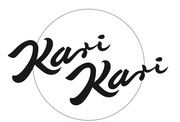Sustainability
WE BELIEVE THAT THERE ARE MANY WAYS TO EVALUATE THE TERM SUSTAINABILITY
THAT IS WHY WE MADE A LIST OF ALL CRITERIA RELEVANT TO US AND ASSIGNED A SYMBOL TO EACH. ALL OUR PRODUCTS FULFILL AT LEAST TWO OF THESE CRITERIA. WE AIM TO BE AS TRANSPARENT AS POSSIBLE, BECAUSE WE BELIEVE THAT CONSUMERS SHOULD BE ABLE TO TAKE THEIR OWN CONSCIOUS SHOPPING DECISIONS.
 Eco-friendly production
Eco-friendly production
While extracting raw materials, manufacturing, transporting and trading the
products, attention is paid to energy and resource efficiency. This includes a climate-friendly, reduced CO2 consumption through the use of latest technology and innovative processes. This can mean that only electricity from renewable energy sources is used in production or that water consumption is comperatively reduced. Products that release as little pollutants as possible during manufacturing and production are listed under this point. Labels that can show a trustworthy compensation of their CO2 emissions by supporting environmental projects (e.g. reforestation) also meet the criteria.
 Ecological raw materials
Ecological raw materials
The raw materials and fibres of these products are either derived from organic cultivation, recyled or they are made of cellulose based regenerative fibres with a low impact production process. Besides animal welfare these products keep an eye on the renouncement of toxic chemicals, mineral fertilizers and genetic modification. Favourably the products are made from 100% natural fibres. When offering recycled synthetic fibres we pay attention to its single origin in order to keep it easily recyclable.
 Recycled & Recyclable & Upcycled & Cradle to Cradle
Recycled & Recyclable & Upcycled & Cradle to Cradle
These products stand for recycling and upcycling instead of throwing them away. Materials that have already been used (recycled), components that can be reused in the future (recyclable) and/or used materials are turned into something new (upcycled). The goal is a higher added value of raw materials and longer product life cycles. Cradle to Cradle is a concept that develops eco-effective products that are part of a continuous circulatory system. These materials should be recyclable or compostable. We also assign this criteria to labels that work with dead stock textiles, unsold productions from previous seasons. All methods minimize the waste of valuable raw materials and the risk of the clothes ending up in landfill.
 Social Engagement and Fair Trade
Social Engagement and Fair Trade
Social commitment refers to socially acceptable production conditions, transparent value chains and fair, safe working conditions and fair wages. Core labor standards and other international labor standards of the International Labor Organization (ILO) demand, maximum weekly working time of 48 hours, a maximum of 12 hours overtime / week, at least 1 day off / week, no employment of minors and freedom to organize. If production takes place in a country that government does not adhere to these standards, production is often controlled by independent organizations such as Fair Trade (FLO) or the Fair Wear Foundation (FWF). Cooperations with social support programms and workshops are listed here as well.
 Transparency and Traceability
Transparency and Traceability
Supply chains in the fashion industry are mostly global and extremely complex. Getting everything right and fulfilling every criteria seems almost impossible. A fair and responsible fashion company therefore attaches great importance to transparency with regards to their goals and the implementation of its own sustainability strategy.
 Handcrafted
Handcrafted
These products were made by hand - often according to ancient traditions. They are mostly crafted in limited numbers and with a lot of heart and soul. Handmade products also promote home-based work, especially in developing countries and keep traditional crafts alive. It is a counterpart to fast fashion and sets an example against mass production.
 Female Empowerment
Female Empowerment
Women behind these products are fairly and equally paid. The label stands up for women's rights and invests in their education and health to protect them from impoverishment.
 Longevity
Longevity
Above-average quality, timeless design and high-quality materials lead to a longer product lifecycle and items with "inheritance character". The product does not submit to current fashion cycles, needs less replacement and thus preserves resources and the environment.
![]() Regional production (within 500km)
Regional production (within 500km)
Regional products are characterized by the traceability and transparency of their production and their use of raw materials and resources. By specifying the production site and the origin of the resources and raw materials used, the regionality of a product can be determined. The raw materials and resources used are mainly sourced within a 500km radius of the production site. The short transport distances reduce CO2 emissions and it promotes regional solidarity and strengthens supplier relationships.
 Made in Europe
Made in Europe
The product is manufactured in EU countries. Transport routes remain manageable and European labor law and environmental standards are respected.
 Charitable
Charitable
The product is made by labels that support independent environmental and charitable organizations and/or social projects
 Certified
Certified
The product has one or more certificates along its value chain.

